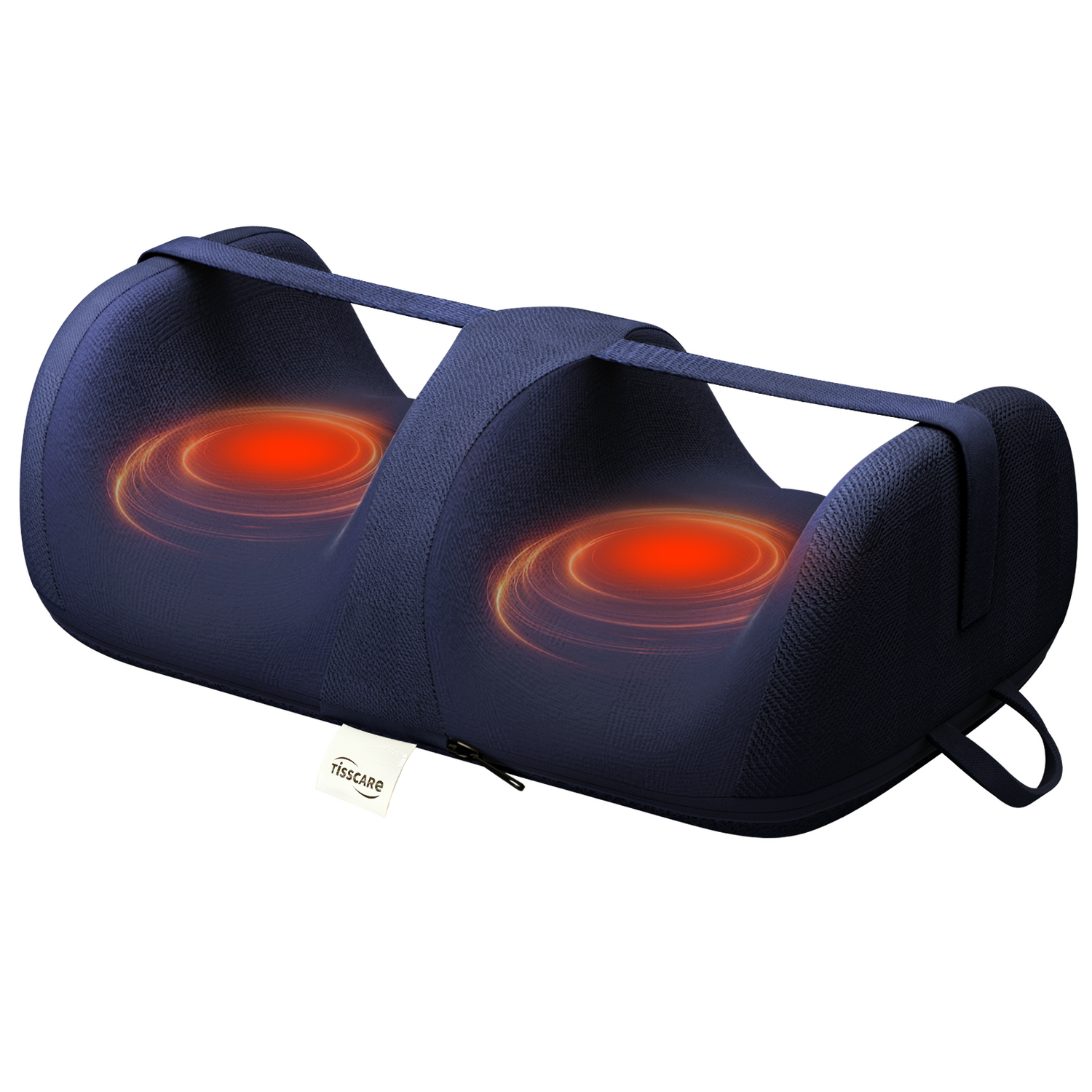Introduction
In today's fast-paced lifestyle, leg health issues have become increasingly common. Prolonged sitting, lack of exercise, wearing high heels, excessive walking, or standing can lead to leg fatigue, poor circulation, muscle stiffness, and chronic pain. Physical therapy, a non-drug intervention, plays a significant role in improving leg health. Recently, foot massagers have gained popularity as a convenient and scientifically backed choice for at-home physical therapy. This article explores common leg health problems, the role of physical therapy, and how foot massagers can help relieve symptoms and enhance overall well-being.
Common Leg Health Issues
Poor Lower Limb Circulation
Sitting or standing for long periods can hinder blood return, leading to leg swelling, varicose veins, or deep vein thrombosis. Symptoms often include a heavy sensation in the legs, numbness, and nighttime cramps.
Plantar Fasciitis
The plantar fascia supports the foot arch. Overuse or improper stress may lead to inflammation, causing sharp heel or foot pain, especially noticeable in the morning.
Muscle Fatigue and Soreness
Intense workouts or prolonged standing and walking can cause lactic acid buildup, resulting in stiff, sore muscles that reduce mobility and comfort.
Arthritis and Joint Degeneration
Wear and tear of the knee and ankle joints can lead to pain, swelling, and limited movement, commonly affecting the elderly and athletes.
Diabetic Foot and Neuropathy
People with diabetes may experience numbness, tingling, or slow-healing wounds due to impaired circulation and nerve function.
If you've ever searched for "leg massage near me," you're likely aware of how essential lower limb relief can be. However, many find that in-clinic appointments are either too expensive or time-consuming.
The Role of Physical Therapy in Leg Health
Physical therapy uses non-invasive techniques to restore leg function. Common methods include:
- Massage Therapy: Promotes circulation and relieves muscle tension.
- Heat/Cold Therapy: Reduces inflammation and eases pain.
- Stretching and Exercise Therapy: Improves muscle flexibility and joint stability.
- Electrical Stimulation: Enhances neuromuscular function.
While professional therapy is effective, it often requires regular clinic visits. This is where home-use therapy devices like foot massagers come in as ideal alternatives.
Foot Massagers: Scientific Principles and Key Functions
Foot massagers blend modern technology with traditional massage concepts, simulating professional techniques through multiple modes. Core functions include:
- Air Compression Massage: Airbags inflate and deflate to wrap and squeeze the calves and feet, promoting venous return and relieving swelling.
- Kneading Rollers: Simulate hand movements, stimulating foot reflex zones to improve organ function and ease plantar fasciitis.
- Heating Function: Expands blood vessels and speeds up waste removal, ideal for those with arthritis.
- Vibration and Stretching: Low-frequency vibration relaxes deep muscles, while stretching improves ankle flexibility.
- Customized Programs: Smart modes tailored to specific needs enhance user experience.
Who Can Benefit from Foot Massagers?
- Office Workers: Improve circulation and prevent varicose veins from prolonged sitting.
- Fitness Enthusiasts: Speed up lactic acid breakdown and relieve sore muscles.
- Seniors: Alleviate joint pain and boost foot stability.
- Standing Professionals: Reduce pressure on the soles and prevent plantar issues.
- Diabetic Patients (with medical guidance): Support microcirculation and reduce nerve damage risks.
Instead of constantly searching for "leg massage near me," a quality foot massager provides ongoing, anytime care at home—without the commute or appointment scheduling.
How to Choose the Right Foot Massager
- Comprehensive Functions: Prioritize models offering multiple modes like massage, heat, and air compression.
- Adjustable Intensity: Ensure it suits varying tolerance levels and avoids overstimulation.
- Comfortable Design: Look for ergonomic designs that contour to the feet.
- Reputable Brand & Support: Trusted brands offer better quality and service.
Scientific Validation: Do Foot Massagers Really Work?
Numerous studies support the effectiveness of foot massagers:
- A Japanese study found that 20 minutes of foot massage increased lower leg blood flow by 40%.
- The Journal of Rehabilitation Medicine reported that foot reflexology significantly improved sleep quality in insomnia patients.
- Clinical data shows diabetic patients using foot massagers three times a week had reduced foot ulcer risks.
For those frequently searching "leg massage near me" due to chronic discomfort, investing in a scientifically engineered foot massager may offer lasting and accessible relief.
Conclusion
Leg health directly impacts quality of life, and physical therapy is crucial for maintaining lower limb function. With scientifically grounded design and convenient operation, foot massagers have emerged as a go-to wellness solution at home. Whether for disease prevention or recovery support, using a foot massager appropriately can continuously enhance leg health and daily comfort.

